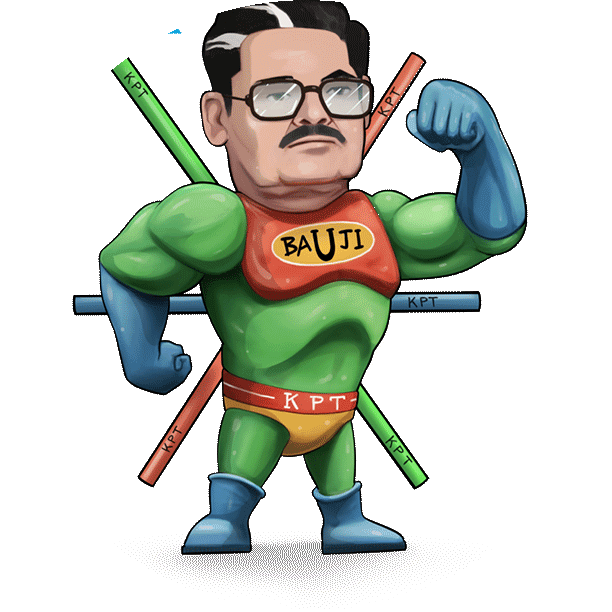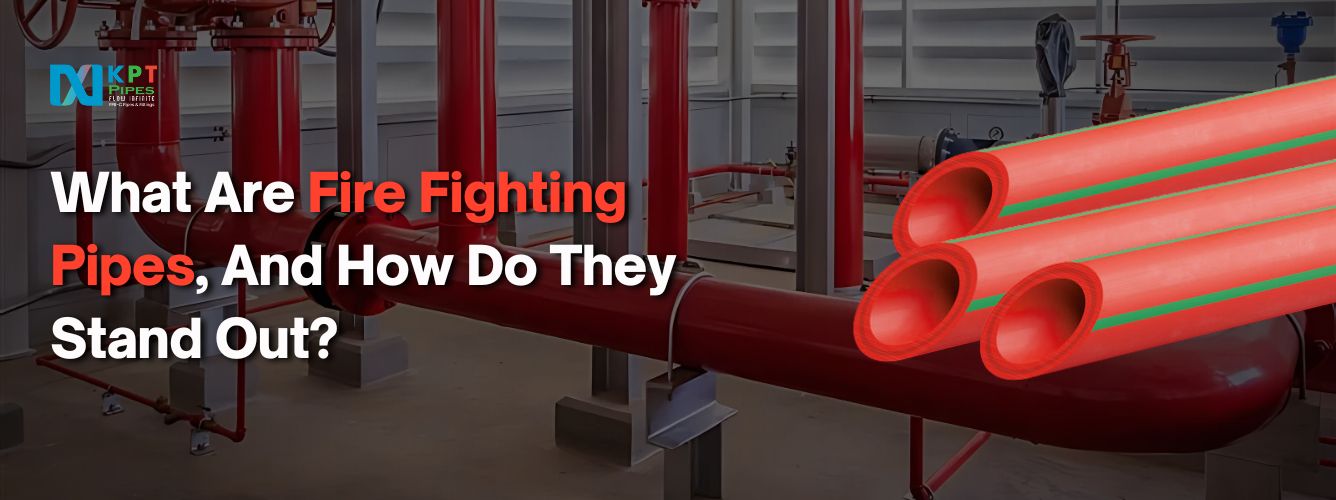A single spark in your building can turn into a raging inferno in minutes. Massive property losses and tragic injuries often follow with such a fire when water delivery fails under pressure. But can you really prevent serious injuries from happening due to fire?
Meeting strict fire safety standards within a building isn’t just compliance, it is essential to save lives. Therefore, every property must have a proper defense plan ready to fight the fire. Adding the right pipes and help ensure you succeed in this fight. The right type of pipes and plans can ensure water reaches every corner, every floor, without hesitation. But can you use any type of pipes when designing a building fire protection plan? Absolutely not!
A building needs a specialized piping system known as fire fighting pipes. These are specialized pipes with unique designs, materials, and pressure ratings tailored for emergencies. This guide unpacks exactly what sets them apart, how they tie into your fire sprinkler system, and why choosing them makes all the difference.
Table of Contents
ToggleWhat Are Fire Fighting Pipes?
Fire fighting pipes are not the regular type of systems you use in your water and plumbing project. They have a specialized purpose, and they are designed to serve that purpose. Ideal fire suppressant pipes are formed of a dedicated network that is specially designed to carry large volumes of water or extinguishing agents during a fire event. These pipes are made of fire-proof materials and have the power to fight extreme heat. This means, they won’t melt or break when a fire breaks out.
Additionally, because water or extinguishing agents are dropped from firefighting pipes at a high rate of speed, these pipes are made to withstand higher pressure. Moreover, the joints and fittings of Fire suppressing pipes are specially engineered to provide a leak-proof operation even under serious pressure surge.Since fire events expose piping to heat, pressure, and corrosive residues, fire suppression pipes are built from corrosion-resistant alloys, CPVC, or composite polymers. They connect directly to standpipes, hydrants, and sprinkler heads without sharing the same valves or fixtures as your regular water lines. This separation guarantees that, when the alarm sounds, water flows freely through a dedicated path designed to meet strict codes and performance tests.
What Are the Features of Fire Fighting Pipes?
Fire suppression pipes differ a lot from ordinary plumbing lines. They are expected to withstand high pressures, extreme temperatures, and corrosive conditions that normal water pipes cannot handle. Their materials, wall thicknesses, and joint designs are all optimized for emergency suppression scenarios.
These pipes are not equal to ordinary plumbing pipes because they possess these features:
Pressure Resistance
You cannot extinguish a fire with normal pipes. Fire suppression demands high water flow and pressures that can exceed 20 bar (290 psi). Regular pipes risk bursting under such surges, but fire fighting pipes like ThermaPlus are engineered with thicker walls and higher rated pressure classes. With this design, water can reach sprinklers on the top floor and multiple hose outlets at the same time without compromising the integrity of the pipes. These pipes maintain consistent pressure even if a fire pump activates and several outlets open at once. This ensures they deliver water exactly where it’s needed effortlessly.
Corrosion Resistance
Unused water inside fire lines can accelerate rust and scale, shrinking flow paths over time. However, fire suppression pipes counter this with corrosion-resistant materials such as galvanized steel, epoxy‐coated metals, or inert polymers. These coatings and compounds create a barrier against moisture and chemicals, preserving pipe integrity for decades. By preventing metal deterioration and pitting, corrosion-resistant fire pipes reduce leak risk and maintenance costs. This feature guarantees readiness whenever the system is called into action
Heat Resistance
Flames can push ambient temperatures near piping well above 300 °C. Standard plastics will soften under such conditions. On the other hand, normal metals may warp under such heat. However, fire suppressant pipes consist of heat‐resistant materials such as CPVC. These materials can handle temperate up to 95 °C, even after continuous use. Moreover, fire fighting pipes are capable of handling brief exposure that may be caused due to higher spikes. They will also be able to hold their shape under direct flame. Choosing heat-resistant pipes like ThermaPlus will prevent collapse or joint failure, ensuring water flows even in the hottest zones of a fire.
Impact and Wear Resistance
Installation and maintenance experts often drag fire lines through tight spaces, exposing them to blunt force from tools and equipment. Hence, fire suppression pipes feature thicker walls and impact‐absorbing composites that resist dents and fractures under mechanical stress. This rugged construction maintains roundness and prevents micro‐cracks, which can lead to slow leaks or sudden failures under pressure. Over time, impact, and wear resistance of these exceptional pipes results into fewer repairs and a more dependable fire suppression network.
Flow Efficiency
Water must travel through pipes with minimal friction loss to extinguish a fire quickly. This will not be possible if your pipe does not have a smooth inner design. However, fire fighting pipes like ThermaPlus Pipes are manufactured with smooth, fine inner surfaces that resist scale buildup and turbulence. This attention to hydraulic tolerances ensures the system meets its design flow rate from pump to nozzle. It allows to power both overhead sprinklers and high-pressure fire hoses effectively. Note that such a consistent flow efficiency is also vital for achieving proper spray patterns and coverage during an emergency, making these pipes an ideal choice.
Standards Compliance
All fire suppression piping must comply with NFPA 13 (sprinkler systems) and NFPA 14 (standpipes and hoses), or equivalent local codes. Certified fire suppression pipes undergo rigorous third‐party testing for pressure, temperature, corrosion, and mechanical performance before market approval. Each certified component ships with detailed documentation verifying code compliance and traceability. Installing a code‐approved pipe like ThermaPlus not only streamlines permits and inspections but also minimizes liability by demonstrating adherence to recognized safety protocols.
Conclusion
There are so many options in the market when it comes to looking for a piping system. That does not mean you can just pick one at random, especially when they will be used in your fire fighting system. The wrong fire fighting pipes will compromise the safety of everyone and everything within a building. Moreover, it leaves open the possibility of non-compliance. So, what to do?
Your building deserves a network you can trust under pressure, heat, and chemical stress. So, prioritize choosing materials rated for high pressure, corrosion resistance, and heat tolerance. Doing so would ensure that your sprinkler and hose systems will deliver water exactly where it’s needed, every time.
ThermaPlus Pipes from KPT Piping System Private Limited combine these critical attributes into one integrated solution. Our company is backed by decades of innovation, rigorous testing, and strict code certifications. ThermaPlus offers you assurance that your building’s lifeline will hold stable when necessary. You can trust KPT’s piping system to protect lives, property, and operations.


